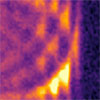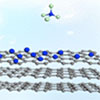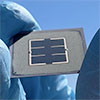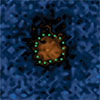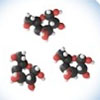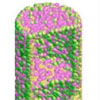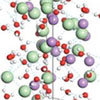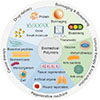Apr 30, 2022 (Nanowerk News) Using the Advanced Light Source (ALS), researchers found that ribbon-like thin films, grown through a bottom-up, self-assembly approach, can act as ultrahigh-quality nanoscale resonators of lattice vibrations at infrared frequencies(ACS Nano, "Ultrahigh-Quality Infrared Polaritonic Resonators Based on Bottom-Up-Synthesized van der Waals Nanoribbons,"). These ultrathin nanostructures...
A new strategy to boost pseudocapacitive performance of graphene micro-supercapacitors
Apr 30, 2022 (Nanowerk News) Graphene-based micro-supercapacitors (EG-MSCs) combine the distinct properties of graphene and the advantages of planar device configuration to maximize charge storage. Therefore, they can provide more flexible, smaller, and thinner devices. However, the limited electric double layer capacity of graphene and the narrow voltage window of...
Improving the efficiency of tandem solar cells
Apr 30, 2022 (Nanowerk News) Solar cells made of silicon are used widely but have limited power-conversion yields. These yields will likely top out at around 27% in the foreseeable future, owing to fundamental thermodynamic limitations. Modules incorporating these solar cells will have maximum yields of around 23–25%. However, these...
Making chemical separation more eco-friendly with self-assembled nanoscale membranes
Apr 30, 2022 (Nanowerk News) Chemical separation processes are essential in the manufacturing of many products from gasoline to whiskey. Such processes are energetically costly, accounting for approximately 10–15 percent of global energy consumption. In particular, the use of so-called “thermal separation processes”, such as distillation for separating petroleum-based hydrocarbons,...
Light-infused particles go the distance in organic semiconductors
Apr 30, 2022 (Nanowerk News) Polaritons offer the best of two very different worlds. These hybrid particles combine light and molecules of organic material, making them ideal vessels for energy transfer in organic semiconductors. They are both compatible with modern electronics but also move speedily, thanks to their photonic origins....
Hybrid electro-biosystem upcycles carbon dioxide into energy-rich long-chain compounds
Apr 30, 2022 (Nanowerk News) Artificial upcycling of carbon dioxide (CO2) into value-added products in a sustainable manner represents an opportunity to tackle environmental issues and realize a circular economy. However, compared with facilely available C1/C2 products, efficient and sustainable synthesis of energy-rich long-chain compounds from CO2 still remains a...
a promising strategy to configure nanowire arrays for ultrastable supercapacitors
Apr 29, 2022 (Nanowerk News) Self-supporting electrode material without binder exhibits better energy storage capacity and better stability than conventional powder electrodes because of its lower electrical resistance. Among various metallic compositions with pseudocapacitive properties, Ni and Co compounds, including their (hydro)oxides, sulfides and phosphides, are highly theoretical due to...
New approach may help clear hurdle to large-scale quantum computing
Apr 29, 2022 (Nanowerk News) Building a plane while flying it isn’t typically a goal for most, but for a team of Harvard-led physicists that general idea might be a key to finally building large-scale quantum computers. Described in a new paper in Nature ("A quantum processor based on coherent...
Wide-temperature range and high-voltage aqueous MXene planar micro-supercapacitors
Apr 29, 2022 (Nanowerk News) This study (National Science Review, "Kinetic regulation of MXene with water-in-LiCl electrolyte for high-voltage micro-supercapacitors") is led by Prof. Zhong-Shuai Wu (Dalian Institute of Chemical Physics (DICP) of the Chinese Academy of Sciences (CAS)), and Prof. Hui-Ming Cheng (Institute of Metal Research of CAS). MXenes,...
Biomedical polymers: Synthesis, properties, and applications
Apr 29, 2022 (Nanowerk News) Biomedical polymers have been extensively developed for promising applications in a lot of biomedical fields, such as drug delivery, disease detection/diagnosis, biosensing, regenerative medicine, and disease treatment. For example, polymer-based carriers provide major advances in improving bioavailability and therapeutic outcomes at spatiotemporal drug delivery, greatly...

